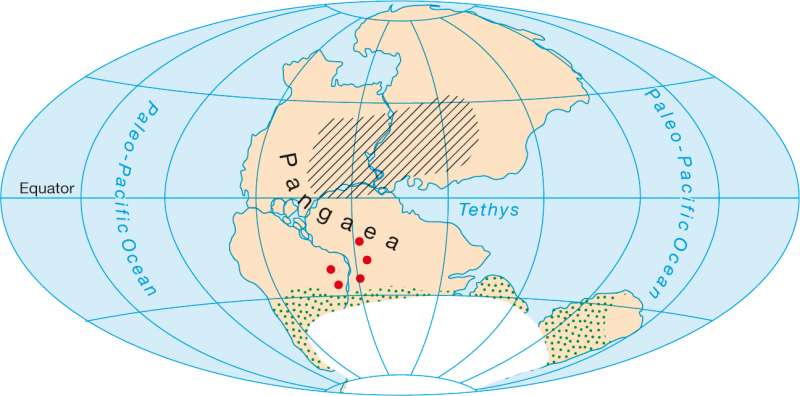Continents 250 million years ago
The world - Physical
978-3-14-100790-9 | Page 172 | Ill. 2

Information
In maps 1 to 3 succinct continent configurations are shown. They show, in comparison to the situation today (see map 4) clear changes and show the mountain formations, ice ages or biological development activities in context, which emerged through the tectonic plate within a few million years.The information regarding the development of the Earth includes extracts from geological and paleontological research. The geology here is concerned with the construction and distribution of the continents on the Earth's surface, existing rock and deposit/reservoir structures- as well as processes which appear with the formation and destruction of these surface structures.
Theories about plate tectonics, the relationships between the different continents (see Atlas p. 8) are supported by paleogeographic evidence originally from the beginning of the Mesozoic supercontinent (Pangaea) and what was the original-Pacific Ocean. From Pangaea, two continents, which separated through the Tethys, developed as Laurasia and Gondwana up as far as the head chalk.
However, the separation between Africa and South America on both partial continents occurred and also between North America and Asia, developed differently from thereon. The maintenance of a land bridge between North America and Eurasia existed for a long time. South America and Africa were clearly separated as early as the Palaeogene (Low Tertiary). At this time, the present-day subcontinent India had already been pushed far in the direction of Asia. Australia's impending separation from the Antarctic became more apparent. The European North/Norwegian Sea between Greenland and Norway emerged accordingly from the oldest paleogene.
In the course of this, the Palaeogene belt arose from the Tethys and resulted in a land bridge between Africa and Eurasia. North and South America were connected together through the young mountain ranges in Central America. The collision of the Indian shield with Asia, among others, led to the formation of the Himalayas. Australia also went through a long period of isolated development with an autonomous animal and plant world.
V. Kaminske; Ü: Colette Fleming




